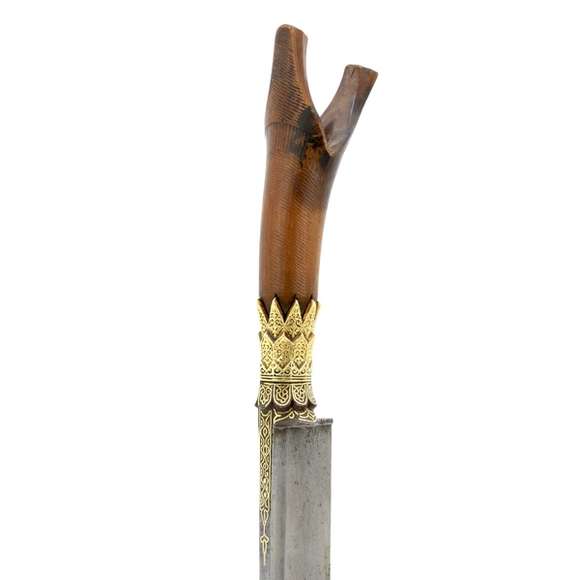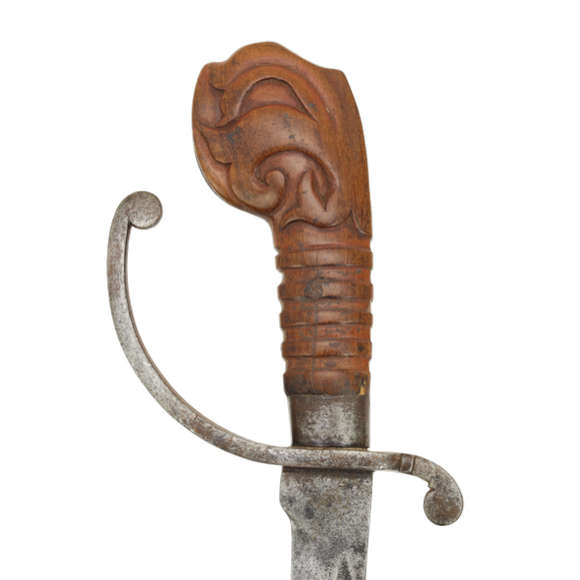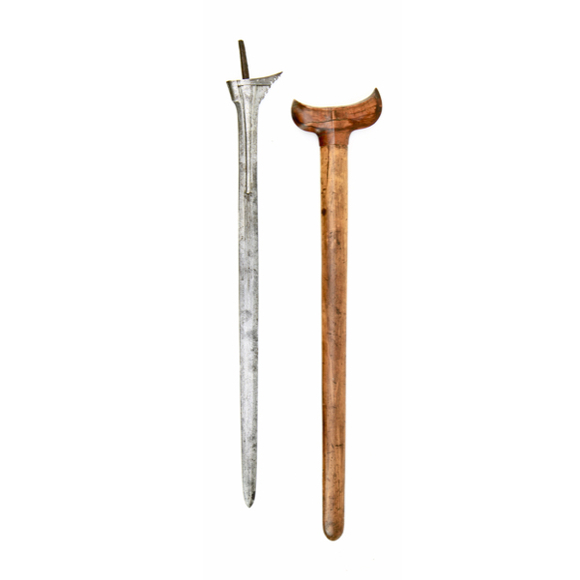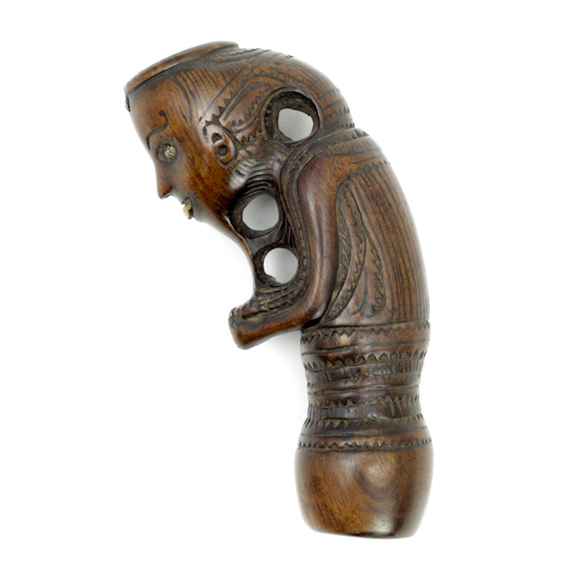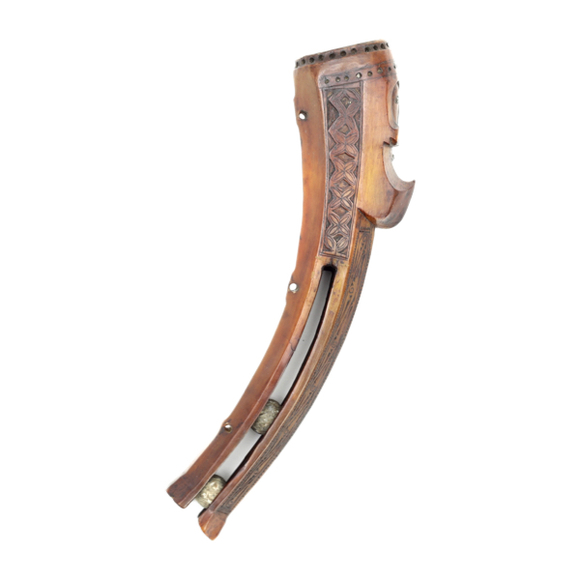Its blade with very fine and complex pamor, brought out by a polish.

66.5 cm
56 cm
Base 11 mm
Middle 3 mm
Near tip 3 mm
Narrow part at base 21 mm
Widest at swelling 19 mm
Near tip 12 mm
252 grams
11 cm from hilt
Sumatra, Indonesia
Iron, steel, copper alloy, wood, water buffalo horn
Probably early 19th century
Description
Keris panjang literally means "long keris", a weapon mostly associated with Sumatra and Malaysia.
"The Kris Panjang is worn generally by the Malayan aristocracy, and bridegrooms. I have seen some beautiful specimens of this weapon in Rumbowe, worn by the chiefs of that state. The blades resembled that of a long keen poniard, of Damascus steel; the handles of ebony, covered with flowered gold, and sheaths richly ornamented with the same metal: they are used in the execution of criminals." 1
-Thomas John Newbold,1839.
For more historical references, including a detailed account of an execution, see the keris panjang glossary article.
This example
A typical example of the keris panjang of Sumatra. The long, straight blade of lenticular cross-section exhibits a slight swelling in the profile that is often seen on Sumatran keris. The blade is not iron but good steel with a spring temper that rings clearly when struck. In the current condition hints of its subtle wood grain pattern (pamor) can be seen. There is a stamped mark on one side of the blade. One minor nick.
The hardwooden scabbard is polished to a high gloss to reveal the details of the wood. The tip is reinforced with a piece of horn, v-spliced in as is a trait of Sumatran work. The characteristic boat-shaped mouthpiece called wranka shows off a nice striped pattern in the wood.
The hilt is made of pierced and carved buffalo horn. The decor consists of segments of floral scrollwork separated by bands with rows of crosses. The execution is quite fine, it's details slightly rounded off by prolonged use, with a deep patina on the polished high spots. It has a yellow metal collar piece that is finely engraved with acanthus leaves.
A nice example with a finely pierced hilt. All in original condition, no replaced parts.
Notes
1. Thomas John Newbold; Political and statistical account of the British settlements in the Straits of Malacca, Vol II, J. Murray, 1839. Page 212.
















